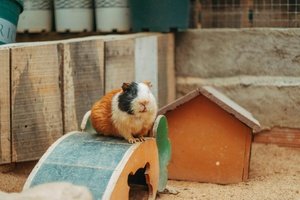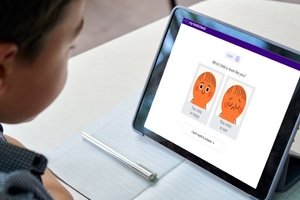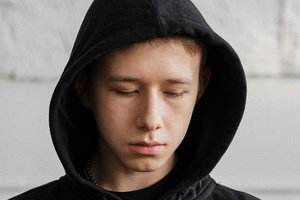It raises quite the rhetorical question, the senior lecturer and researcher at Swinburne University says: does having a beautiful, engaging classroom equate to being a good teacher?
“Of course not,” she tells EducationHQ.
“Obviously there's some truth to that phrase.”
Having watched hundreds of teachers share snippets of their professional lives on TikTok (or ‘TeacherTok’ as she calls it), over the past few years, Hartung has seen the intensifying impact of edu-influencers on the platform, keenly observing how teachers’ identity is displayed as a performance for the world to see.
The start of the school year typically conjures a flurry of videos showcasing teachers’ aesthetically impressive classroom set-ups, the researcher says, which can be read in both positive and negative ways.
“You can absolutely see how that would be overwhelming for another teacher who's like, ‘oh, I just set it up on Thursday afternoon for a couple of hours. Like, what more do you want from me?’”
Indeed, one recent post on the r/AustralianTeachers Reddit page confronts this exact issue.
“I have this overhanging guilt about not doing enough classroom setup or preparation. I’ve seen all of these amazing TikToks of teachers setting up their classroom so nicely,” one teacher confesses.
“As much as I would love to be one of those teachers, I just haven’t had the time or motivation. Now I’m filled with this guilt that I haven’t done enough. Not only have I been travelling, but I also haven’t wanted to waste my holidays working when I should be resting and relaxing…
“I also know these TikTok teachers aren’t [a] reality for many of us but the anxiety is driving me up the wall.”
Opting to remain non-judgemental about TikTok and its effect on teachers at large, Hartung says a more cynical reading of this scene would “paint a pretty negative picture”.
“[One] whereby teachers, especially new teachers, are left feeling inadequate when they compare their own classrooms to the curated or seemingly kind of superficial accounts that they see from teacher content creators.
“In this sense, these decorated classrooms are kind of teachers showing off. And you could say it’s not the real work of teaching,” she suggests.
According to one Reddit commentator weighing in on the teacher’s set-up dilemma, “TikTok education influencers are basically toxic to the profession”.
“They normalise coming in outside work hours, volunteering unpaid overtime, and generally promote terrible working conditions. Block them,” they advised.

Social media – and TikTok in particular – have intensified the levels of ‘sharing and comparing’ within the profession, Hartung says.
Those posting the ‘a peek inside my classroom-esque’ videos tend to be younger teachers who are early on in their careers.
And decorating their space could be seen as a means of tethering themselves in what is likely a nervy and overwhelming time, Hartung says.
“They tend to be graduates who are maybe setting up their very first classroom.
“And I think every teacher remembers the nerves they had, the anticipation of their first day with their very first class. There are a lot of unknowns and things and tiny humans that are out of your control.
“And so, I think there is an element of ‘decorating the classroom is within your control’, and it does give teachers maybe a false sense of security – but it does allow them to take ownership over their space,” she says.
Adopting a rosier perspective, an alternate reading of the scene acknowledges the solid community of educators that TikTok appears to establish.
There’s no denying it is a space where everything from Kmart bargains on classroom supplies to ‘woe is me’ videos are generously shared, Hartung points out.
“There's also people who think of TikTok as having this incredibly positive influence that fosters community, where teachers come together to share hacks and resources and inspire each other to pay closer attention to their classrooms…”
Teachers wanting to beautify their classrooms is also not a new phenomenon, Hartung flags.
Rather, the need to create and maintain a supportive and safe learning environment is ‘drilled into them’ via not only the professional standards but also during ITE, she argues.
“In the early years they’re particularly good at this, and they refer to the learning environment as ‘the third teacher’.
“And similarly, it’s not new that teachers have always shared and compared what they do with other teachers, right?
“It would be weird for a teacher not to walk past their colleague’s classroom and take a quick peek to see what they’re up to or to share some resources.
“That’s part of everyday lives of teachers in schools everywhere around the world.”
However, social media – and TikTok in particular – have intensified this ‘sharing and comparing’ within the profession to an entirely new level, Hartung observes.
“Teachers now have unprecedented access to the everyday classrooms of their peers from around the world in all sorts of different educational contexts; some with lots of resources, others not so much.
“So, is this a good or a bad thing?” she queries.
While they might trigger guilt, anxiety or feelings of adequacy in some teachers, TikTok creators who showcase their classrooms do deserve some kudos, Hartung indicates.
“I think a lot of the people who are posting, they’re proud of their classrooms.
“You could read that as being, ‘oh, they’re showing off’. But it's also like, well, they're sharing the joys of their job, which is actually a really nice thing.
“Like, how fun! You get a space and you get to do what you want with it.”
This is the first in a short series of articles canvassing Dr Hartung's insights on 'TeacherTok', classroom design and decoration when considering cognitive load theory, and trends in teachers' related spending habits.














